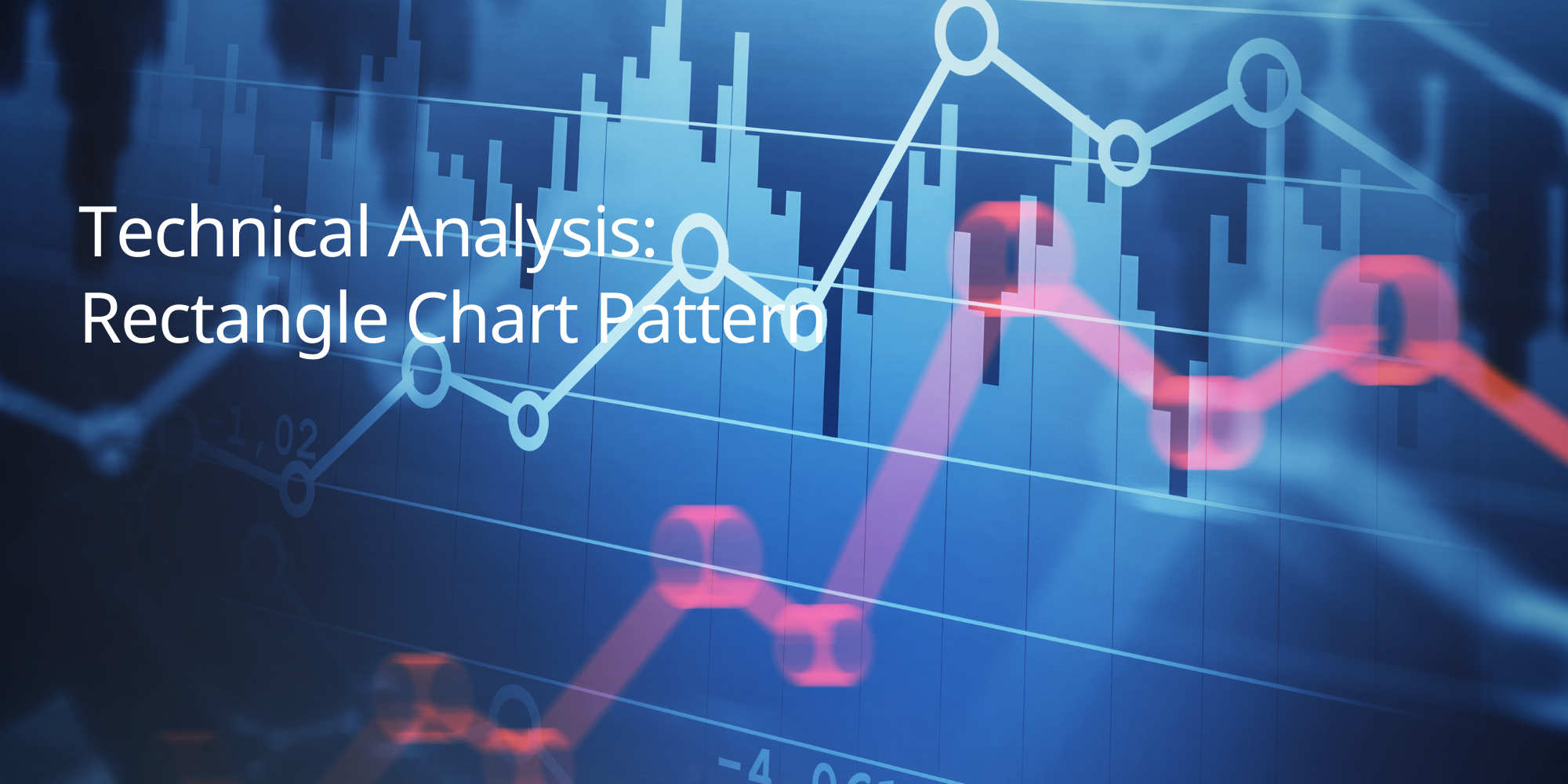Rectangle Chart Pattern: Identifying Consolidation and Breakout Opportunities
The Rectangle Chart Pattern is a popular technical formation that signals consolidation within a defined price range. It represents a temporary pause in the market before a breakout occurs—either in the direction of the prior trend or as a reversal.
In this comprehensive guide from TradeSmart, you’ll learn:
- What the Rectangle pattern is and how it forms
- The difference between bullish and bearish rectangles
- How to anticipate and confirm breakouts
- Trading strategies to capitalise on breakout opportunities from consolidation zones
Whether you’re trading range-bound markets or planning breakout entries, the Rectangle pattern is a versatile tool to strengthen your strategy.
What is the Rectangle Chart Pattern?
The Rectangle pattern is a chart formation that occurs when the price of an asset trades within a well-defined range, bouncing between horizontal support and resistance levels. This creates a sideways price action that resembles a rectangle.
Key Characteristics of a Rectangle Pattern:
- Horizontal Support and Resistance: The pattern is defined by clear horizontal support and resistance lines.
- Consolidation: The price oscillates between these levels, indicating a period of indecision in the market.
- Breakout: Eventually, the price is expected to break out of the rectangle, either upwards or downwards, signaling the end of the consolidation and the start of a new trend.
- Volume: Volume typically decreases during the consolidation phase and then increases on the breakout.
How the Rectangle Pattern Works
The pattern typically forms in three phases:
- Prior Trend: The rectangle pattern can form after an uptrend or a downtrend. The prior trend establishes the context for the pattern and can influence the direction of the eventual breakout.
- Consolidation: The price starts to consolidate within a well-defined range, bouncing between horizontal support and resistance levels. This indicates a period of indecision in the market, where neither buyers nor sellers can take control.
- Breakout: Eventually, the price breaks out of the rectangle, either upwards or downwards. This signals the end of the consolidation and the potential start of a new trend or a continuation of the existing trend.
Why the Rectangle Pattern Works
The Rectangle pattern works by identifying a period of equilibrium between buyers and sellers. The price action within the rectangle suggests that the market is pausing to digest previous price movements and assess the next direction. The eventual breakout signals a shift in the balance of power, with either buyers or sellers taking control.
Trading with the Rectangle Pattern
Traders often use the Rectangle pattern to identify potential entry and exit points for their trades. A breakout from the rectangle can signal a new trading opportunity, with the direction of the breakout indicating the potential direction of the new trend.
Trading with the Rectangle Pattern
The Rectangle pattern can provide valuable signals for traders who are looking for potential breakouts and trend continuations. Here’s how to trade this pattern effectively:
- Identify the Pattern: Look for a period of consolidation where the price is bouncing between clear horizontal support and resistance levels, forming a rectangle-like shape.
- Confirm the Breakout: Wait for the price to break decisively out of the rectangle, either above the resistance level or below the support level. This breakout signals the end of the consolidation and the potential start of a new trend or a continuation of the existing trend.
- Consider Volume: Look for increasing volume on the breakout. This can confirm the strength of the move and increase the likelihood of a successful breakout.
- Enter a Trade: Once the breakout is confirmed, consider entering a trade in the direction of the breakout.
- Long Trade: Buy the asset if the price breaks out above the resistance level.
- Short Trade: Sell the asset (or go short) if the price breaks down below the support level.
- Set a Stop-Loss Order: Place a stop-loss order just outside the opposite boundary of the rectangle.
- Long Trade: Place your stop-loss below the support level.
- Short Trade: Place your stop-loss above the resistance level.
- Consider a Profit Target: The potential price target for a breakout from a rectangle can be estimated by measuring the height of the rectangle and projecting that distance from the breakout point.
Example:
Imagine a stock that has been trading within a range between $50 and $60 for several weeks. The volume has been declining during this consolidation. Suddenly, the price breaks above $60 on increased volume. This could signal a breakout from the rectangle pattern and the start of a new uptrend.
Advantages and Limitations of the Rectangle Chart Pattern
The Rectangle Chart Pattern is a valuable tool for traders, but it’s important to understand both its strengths and weaknesses.
Advantages:
- Identify Potential Trend Direction: The Rectangle pattern can help traders anticipate the direction of a potential breakout. An upward breakout suggests a bullish trend, while a downward breakout suggests a bearish trend.
- Clear Entry and Exit Signals: The breakout from the rectangle provides clear entry and exit signals for trades. Traders can enter a long position on an upward breakout or a short position on a downward breakout.
- Risk Management: The well-defined boundaries of the rectangle pattern can be used to set stop-loss orders, helping traders manage their risk effectively.
Limitations:
- False Breakouts: The price might break out of the rectangle and then quickly reverse back into the pattern, leading to a false breakout and potential losses for traders.
- Whipsaw Price Action: In volatile markets, the price can move erratically within the rectangle, potentially triggering multiple stop-loss orders and leading to frustration and losses for traders.
- Not a Standalone Indicator: The Rectangle pattern is most effective when used in conjunction with other technical indicators, price action analysis, and market context. Relying solely on the rectangle pattern can lead to misinterpretations of market conditions and potentially unprofitable trades.
Mitigating the Limitations
To overcome these limitations, traders can:
- Combine with Other Indicators: Use the Rectangle pattern in conjunction with other technical indicators, such as moving averages, trend lines, or momentum oscillators, to confirm signals and filter out false signals.
- Consider Market Context: Always interpret the Rectangle pattern’s signals in the context of the overall market environment. Consider factors such as news events, economic data releases, and the broader market trend when making trading decisions.
- Practice Risk Management: Use appropriate risk management techniques, such as stop-loss orders and position sizing, to limit potential losses.
TradeSmart encourages traders to use the Rectangle pattern as part of a comprehensive trading strategy. By understanding its limitations and combining it with other analytical tools, traders can make more informed decisions and improve their trading outcomes.
Common Mistakes to Avoid When Trading the Rectangle Pattern
The Rectangle pattern can be a valuable tool for traders, but it’s important to be aware of some common pitfalls to avoid:
- Entering Trades Prematurely: Don’t enter a trade before the price breaks decisively out of the rectangle. A premature entry could result in a false signal and a losing trade if the price fails to break through the resistance or support.
- Ignoring False Breakouts: The price might break out of the rectangle and then quickly reverse back into the pattern, leading to a false breakout and potential losses for traders. It’s important to confirm breakouts with other indicators or price action analysis.
- Neglecting Risk Management: Always use appropriate risk management techniques when trading the Rectangle pattern, such as stop-loss orders and position sizing. This will help protect your capital and limit potential losses if the trade moves against you.
- Not Considering Market Context: Interpret the Rectangle pattern in the context of the overall market environment. Consider factors such as news events, economic data releases, and the broader market trend when making trading decisions.
- Misidentifying the Pattern: Not all formations that resemble the Rectangle pattern are valid signals. Make sure the pattern meets the key characteristics, including the clear horizontal support and resistance levels and the consolidation phase.
Conclusion
The Rectangle pattern is a reliable chart formation that helps traders identify breakouts and trend continuations. By recognising this period of indecision and preparing for a breakout, traders can capture powerful moves and make better-informed decisions.
With TradeSmart, you gain access to everything you need to trade Rectangle patterns effectively:
- Tools to spot and analyse consolidation zones on MT4 and MT5
- Strategies for breakout confirmation and price target setting
- Educational materials to understand market structure and pattern psychology
- Risk management features to protect capital during false breakouts
Ready to enhance your technical analysis with Rectangle patterns?
- Open a TradeSmart account and explore our advanced charting tools
- Practice your strategies in a risk-free demo account
- Start live trading with just a $50 deposit
Visit TradeSmart.com today and unlock the power of Rectangle pattern analysis in your trading journey.





